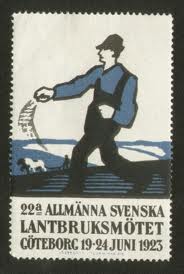The aim of this investigation was to broaden our knowledge of possible leaching to water of pesticides used in field cultivation of horticultural crops and in greenhouses. The investigation, which was carried out in 2008, is the most comprehensive to date as regards the number of pesticides analysed in Swedish watercourses. The analyses comprised 126 different substances, 39 of which have not been investigated previously within Swedish environmental monitoring. The investigation consisted of surface water sampling in six areas with extensive growing of horticultural crops. Field growing of berries occurred in the catchment area in SE Småland, vegetables in NE Skåne and fruit in SE Skåne. Greenhouse cultivation took place in the catchment area in W Skåne and NW Skåne.
Some 10 samples per area were collected during the period May-October 2008. In addition, around 20 water samples were collected foranalysis from one of the areas included in national environmental monitoring (area N34 in Halland). A few samples were also taken of the effluent water from greenhouses with recirculation systems. A total of 78 of the 126 substances included in the investigation were encountered, with a range of between 24 and 44 substances detected in water from the individual areas. The highest numbers of substances and the highest concentrations were detected in the area with intensive vegetable growing in NE Skåne, in the area in Halland and in the two areas with greenhouse growing. Lower concentrations and fewer substances were found in water from the area in SE Småland with strawberry cultivation and from the area in SE Skåne with apple orchards. The guideline value was exceeded in most of the samples collected from the area in NE Skåne and in all samples from the two greenhouse areas (W Skåne and NW Skåne), with the highest exceedences in the latter two areas. The insecticide imidacloprid was the substance that exceeded the guideline value most frequently in this investigation. Some of the substances encountered at elevated levels in water from the areas with greenhouse cultivation were also detected in the samples of effluent water taken from the greenhouses. Substances used widely in ornamental plant production in the greenhouse were also found in the watercourse in W Skåne. The results show that there is leaching of crop protection products from Swedish greenhouses.
Source:
Jenny Kreuger, Sarah Graaf, Johan Patring och Stina Adielsson (2010).
esticides in surface water in areas with open ground and greenhouse horticultural crops in Sweden 2008. Swedish University of Agricultural Sciences, Division of Water Quality Management, Uppsala (attached).

- Log in to post comments
